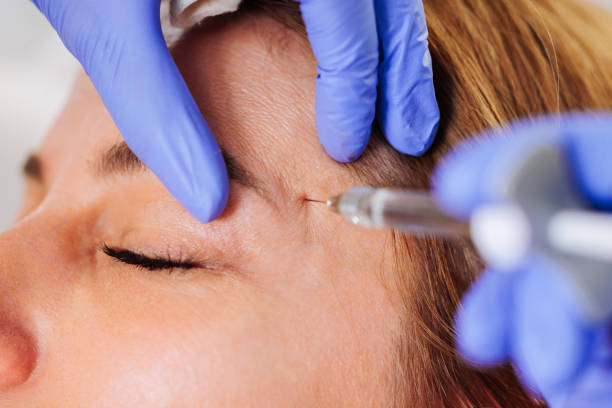
How to have smooth skin
Everyone strives for a complexion that exudes radiance and smoothness, but achieving that flawless skin texture can seem like a daunting task. With the plethora of advice available, it’s hard to know where to begin. However, the journey to smoothing skin and getting rid of rough textures starts with understanding your skin’s unique needs and implementing a consistent care routine. In this detailed guide, we will explore practical tips and strategies to help you shed dead skins and dead cells, while enhancing your skin’s natural glow. Whether you have oily, dry, or combination skin, this article will help you pave the way to a smoother and more even skin tone.
Understanding Your Skin Type
To tailor a skin care routine that is effective in maintaining smooth skin, one must first identify their skin type. The main skin types include normal, dry, oily, combination, and sensitive. Each type has its own characteristics and requires specific care products. For instance, individuals with oily skin might have to deal with excess sebum which could cause clogged pores and acne problems, while those with dry skin might experience tightness or rough patches, making their skin feel dry and in need of hydrating ingredients. Learning more about your skin type is an essential step in choosing the right products that will make your skin care routine more effective.

Daily Skincare Routine for Smooth Skin
A proper cleansing routine is the bedrock of any skincare ritual and is critical in removing impurities and preventing the accumulation of dead cells that could lead to an uneven texture. It ensures that the skin’s surface is prepped for further treatments. When choosing a cleanser, be sure not to pick one that feels too drying as it could irritate the skin causing dryness and flakiness. Opt for gentle, natural cleansers that clean without stripping the skin of its natural oils. Natural cleanser ingredients such as honey, which has antibacterial properties and gently removes dirt while nourishing the skin, are great options.
Exfoliation – The Key to Renewal
Exfoliating dead skin cells is a transformative step in revealing smoother, more radiant skin underneath. This process helps remove the outer layers of dead skin, promoting cell turnover and preventing the buildup that results in an uneven texture. There are a variety of exfoliating products on the market, from scrubs to chemical exfoliants like AHAs and BHAs. These products, when used judiciously, can diminish the appearance of fine lines, even out skin tone, and make skin feel significantly softer. However, over-exfoliating can irritate the skin, so it’s important to listen to your skin’s needs and adjust accordingly.
Moisturizing – Locking in Hydration
For skin that feels good and looks plump and vibrant, consistent moisturizing is key. This step helps improve skin texture by adding moisture to prevent dryness and protecting the skin from environmental damages caused by pollutants, harsh weather conditions, and more. Moisturizers come in various forms, such as creams, lotions, and oils, and should be chosen based on skin type and individual skin concerns. Applying moisturizer immediately after cleansing helps lock in the hydration and leaves skin feeling supple and smooth.
Sun Protection – A Critical Step for Skin Care
No matter your skin type, protecting it from the sun’s harmful UVA and UVB rays is crucial. Sun damage is a primary cause of premature aging and can result in uneven skin tones, dark spots, and textural issues. Daily application of a broad-spectrum sunscreen will help prevent these concerns and maintain the skin’s natural glow. For added convenience, there are moisturizers and makeup products containing SPF, reducing the steps in your morning routine.
| Step | Purpose | Recommended Frequency |
|---|---|---|
| Cleansing | Removing impurities and preparing skin | Twice daily (morning/night) |
| Exfoliating | Removing dead cells and promoting cell turnover | 1-2 times weekly |
| Moisturizing | Hydrating and protecting the skin | Twice daily (after cleansing) |
| Applying Sunscreen | Protecting from UV damage | Daily |

Advanced Skincare Techniques
For those looking for even more targeted results or facing specific skin conditions, serums and oils can offer a greater concentration of active ingredients to address concerns like fine lines, uneven skin, and age spots. Serums are lightweight and typically contain potent dosages of skin revitalizers like vitamins C and E, retinol, or hyaluronic acid which helps improve texture while deeply hydrating the skin. Oils, often packed with antioxidant-rich natural ingredients, provide an extra layer of moisture and can increase the skin’s natural defense against environmental factors.
Professional Treatments – Taking Your Skin Care to the Next Level
While there’s much you can do at home, certain skin texture issues require the expertise of a dermatologist or skilled esthetician. Professional treatments, such as chemical peels, microdermabrasion, or laser therapy, can dramatically improve skin texture. These procedures work by removing the uppermost layers of dead skin, revealing a smoother and more even complexion beneath. However, due to their intensive nature, professional treatments should be spaced out and followed by proper aftercare to ensure the best results without damaging the skin.
Lifestyle Habits for Better Skin Texture
Your skin is often a reflection of your overall health. Incorporating healthy foods into your diet, staying hydrated, and ensuring good sleep are fundamental lifestyle habits that can have a significant impact on your skin’s texture. Foods rich in omega-3 fatty acids, like salmon and flaxseeds, and those high in antioxidants, such as berries and green tea, can help support smooth skin. Drinking plenty of water helps flush out toxins and keeps the skin hydrated. Moreover, getting at least 7-8 hours of sleep each night allows the skin to repair and rejuvenate itself.
Stress Management and Exercise
Stress can wreak havoc on the skin, causing irritations and breakouts which lead to texture issues. Managing stress through mindfulness, yoga, or other relaxation techniques can greatly benefit your skin. Exercise, too, plays a role as it increases blood circulation, delivering nutrients to the skin and promoting a natural glow. Moreover, sweating during exercise helps clear out the pores, reducing the likelihood of acne breakouts and resulting in a smoother skin appearance.

Conclusion
Achieving smooth, radiant skin is not just about what you apply on the outside, but also taking care of your health on the inside. It involves a combination of using the right skincare products, employing advanced treatments when necessary, and adhering to healthy lifestyle practices. The path to a smooth complexion might have its challenges, but with patience, dedication, and the tips outlined here, you can make substantial progress toward that glowing complexion we all strive for. Remember, skin care is a journey, and every step you take will bring you closer to your desired results.
FAQs
- Q1: How often should I exfoliate my skin to achieve smoothness?
A1: The frequency of exfoliation depends on your skin type and the product you’re using. Most people benefit from exfoliating 1-2 times weekly, but those with sensitive skin may need to limit this to once a week or less to avoid causing irritation. Always listen to your skin and adjust accordingly. - Q2: Can dietary changes help improve the smoothness of my skin?
A2: Absolutely, a balanced diet rich in vitamins, minerals, and antioxidants from fruits, vegetables, lean proteins, and healthy fats promotes overall health and can lead to smoother skin. Hydration is also important, so don’t forget to drink enough water throughout the day. - Q3: Are natural ingredients effective for smoothing the skin?
A3: Yes, many natural ingredients have properties that can aid in achieving smoother skin. For example, aloe vera hydrates, while tea tree oil helps in reducing blemishes. Be mindful that natural does not always mean suitable for all skin types, so it’s crucial to patch-test and observe how your skin reacts. - Q4: How does sleep affect skin texture?
A4: Adequate sleep is essential for the skin’s repair and regeneration processes. Poor sleep can lead to a sallow, less smooth complexion, and even contribute to the appearance of fine lines and wrinkles. Ensure you’re getting 7-8 hours of quality sleep to support your skin’s health. - Q5: Is sunscreen really necessary even when I’m indoors?
A5: Sunscreen is a must if you’re near windows or if your indoor lighting emits UV rays. UV exposure can occur indoors, and consistent use of sunscreen is recommended to prevent premature aging and maintain smooth, healthy skin. When in doubt, it’s better to apply sunscreen.

